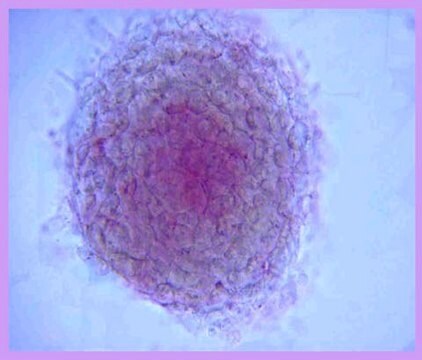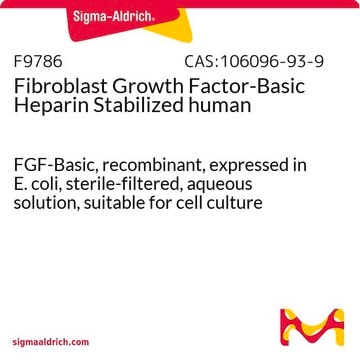SCR030
Human Embryonic Germ Layer Characterization Kit
CHEMICON′s Human Embryonic Germ Layer Characterization Kit allows researchers to assess the differentiation potential of their Human Embryonic Stem Cell (HESC) to form derivatives of all three embryonic germ layers.
About This Item
Empfohlene Produkte
Qualitätsniveau
Speziesreaktivität
human
Hersteller/Markenname
Chemicon®
Methode(n)
cell culture | stem cell: suitable
immunocytochemistry: suitable
Aufnahme
sample type induced pluripotent stem cell(s)
sample type: human embryonic stem cell(s)
Versandbedingung
wet ice
Allgemeine Beschreibung
Mesoderm: bone, cartilage, muscle, blood and vascular system
Endoderm: gastrointestinal tract, respiratory tract and endocrine glands (including liver and pancreas)
Ectoderm: nervous system, skin
CHEMICON®′s Human Embryonic Germ Layer Characterization Kit (SCR030) allows researchers to assess the differentiation potential of their HESC to form derivatives of all three embryonic germ layers. Included in the kit are antibodies that are routinely used by stem cell researchers to identify the lineage fates of HESC following either spontaneous or directed differentiation.
Mesoderm: Smooth Muscle Actin (CBL171)
Cardiac Troponin I (MAB1691-50UG)
Endoderm: Alpha Fetoprotein (2004189)
Ectoderm: Nestin (ABD69)
MAP-2 (MAB3418-50UG)
Anwendung
Stammzellforschung
Komponenten
50 μg of Smooth Muscle Actin mouse monoclonal CBL171
50 μL of Nestin rabbit polyclonal ABD69
50 μg of Cardiac Troponin I mouse monoclonal MAB1691-50UG
50 μg of MAP-2 mouse monoclonal MAB3418-50UG
Lagerung und Haltbarkeit
Rechtliche Hinweise
Haftungsausschluss
Signalwort
Warning
H-Sätze
Gefahreneinstufungen
Acute Tox. 4 Dermal - Acute Tox. 4 Inhalation - Aquatic Chronic 3
Lagerklassenschlüssel
10 - Combustible liquids
Analysenzertifikate (COA)
Suchen Sie nach Analysenzertifikate (COA), indem Sie die Lot-/Chargennummer des Produkts eingeben. Lot- und Chargennummern sind auf dem Produktetikett hinter den Wörtern ‘Lot’ oder ‘Batch’ (Lot oder Charge) zu finden.
Besitzen Sie dieses Produkt bereits?
In der Dokumentenbibliothek finden Sie die Dokumentation zu den Produkten, die Sie kürzlich erworben haben.
Unser Team von Wissenschaftlern verfügt über Erfahrung in allen Forschungsbereichen einschließlich Life Science, Materialwissenschaften, chemischer Synthese, Chromatographie, Analytik und vielen mehr..
Setzen Sie sich mit dem technischen Dienst in Verbindung.








